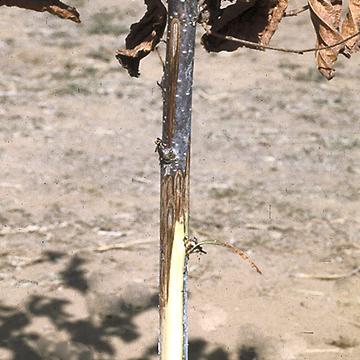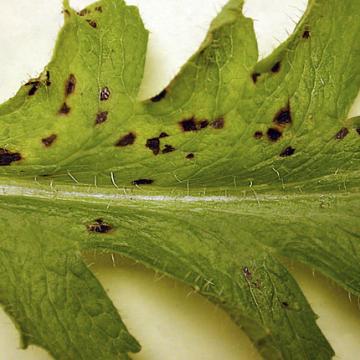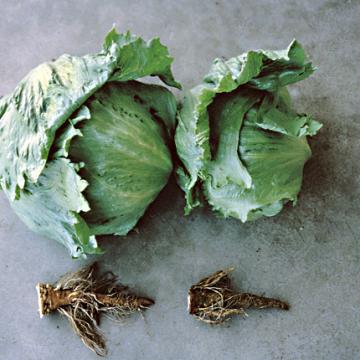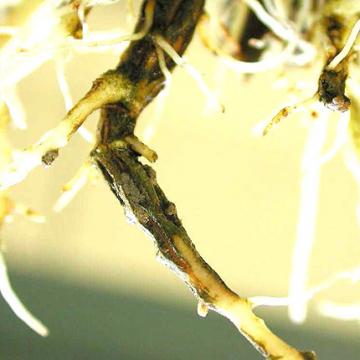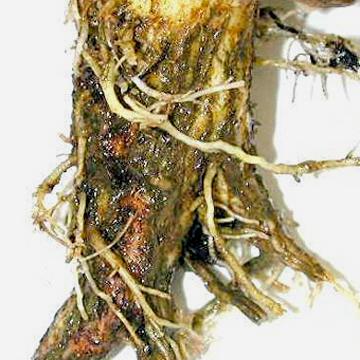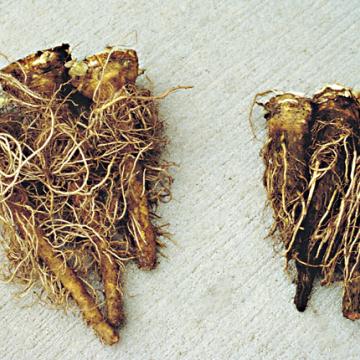DISEASE: Bacterial blight
HOST: Hazelnut
Diseased young tree with discoloration of the cambium. Dieback of young twigs and branches is characteristic. Other typical symptoms are bud and twig necrosis and small, angular or round, water-soaked leaf spots.
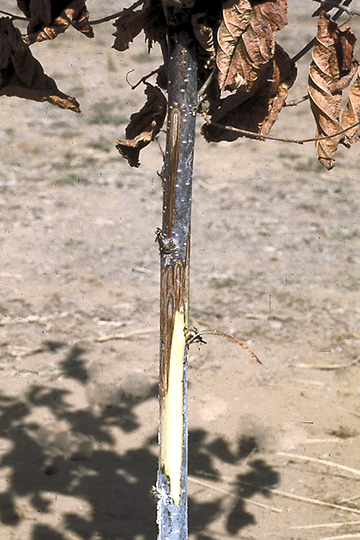
Bacterial blight | Hazelnut
DISEASE: Bacterial blight
HOST: Hazelnut (Corylus americana)
PATHOGEN: Xanthomonas arboricola pv. corylina
SOURCE: J. Pscheidt
DISEASE: Bacterial blight
HOST: Poppy
The disease begins with water-soaked lesions that turn brown to black. They may be surrounded by a translucent ring. Buds, leaves, flowers, and pods are affected.
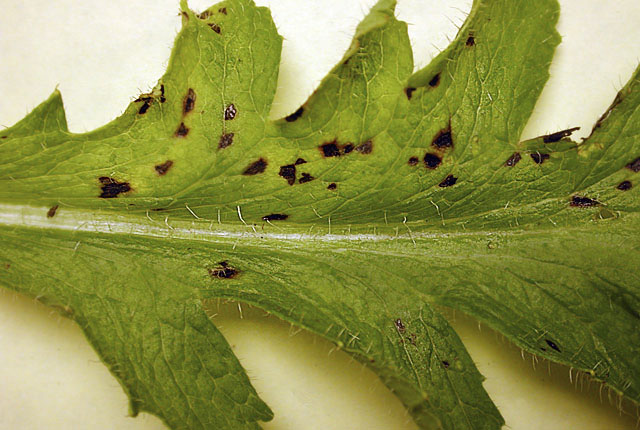
Bacterial blight | Poppy
DISEASE: Bacterial blight
HOST: Poppy (Eschscholzia californica)
PATHOGEN: Xanthomonas campestris pv. papavericola
SOURCE: M. Daughtrey
DISEASE: Corky root
HOST: Lettuce
Corky root causes a reduction in size of lettuce heads and root systems; susceptible cultivar (right) and resistant cultivar (left).
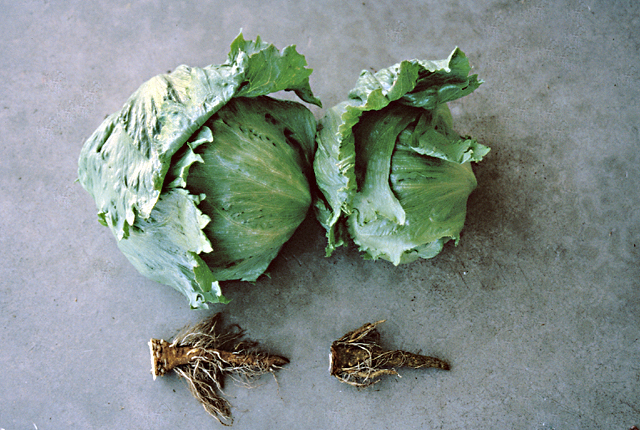
Corky root | Lettuce
DISEASE: Corky root
HOST: Lettuce (Lactuca sativa)
PATHOGEN: Sphingomonas suberifaciens
PATHOGEN SYNONYM: Rhizomonas suberifaciens
SOURCE: E. J. Ryder
DISEASE: Corky root
HOST: Lettuce
Close-up of root with malformed, corky appearance and longitudinal ridges of brown tissues.
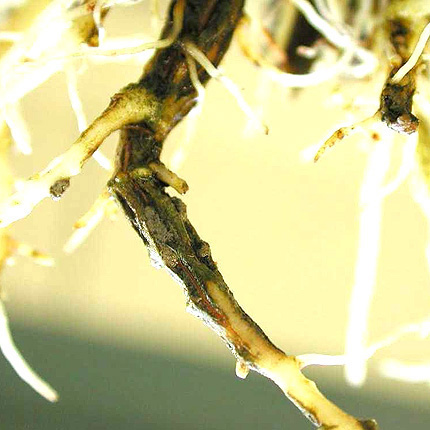
Corky root | Lettuce
DISEASE: Corky root
HOST: Lettuce (Lactuca sativa)
PATHOGEN: Sphingomonas suberifaciens
PATHOGEN SYNONYM: Rhizomonas suberifaciens
SOURCE: A. van Bruggen
DISEASE: Corky root
HOST: Lettuce
Initial symptoms of disease are yellow lesions on taproot and main laterals. Greenish brown bands occur around roots. Root pith may become brown and hollow.
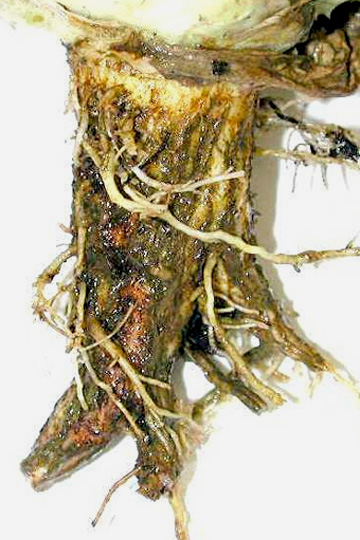
Corky root | Lettuce
DISEASE: Corky root
HOST: Lettuce (Lactuca sativa)
PATHOGEN: Sphingomonas suberifaciens
PATHOGEN SYNONYM: Rhizomonas suberifaciens
SOURCE: A. van Bruggen
DISEASE: Corky root
HOST: Lettuce
Differences in corky root symptoms between susceptible cultivar (right) and resistant cultivar (left).
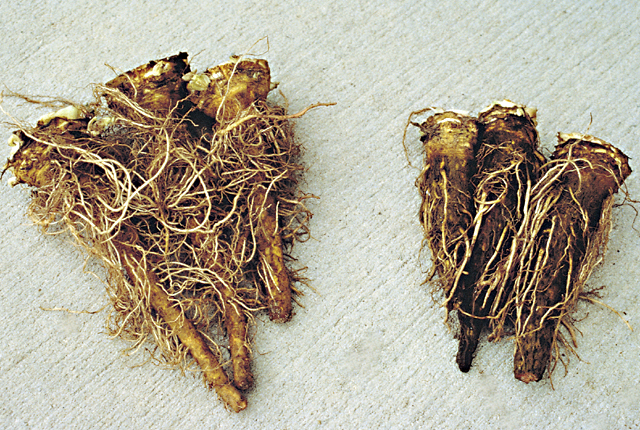
Corky root | Lettuce
DISEASE: Corky root
HOST: Lettuce (Lactuca sativa)
PATHOGEN: Sphingomonas suberifaciens
PATHOGEN SYNONYM: Rhizomonas suberifaciens
SOURCE: E. Ryder


